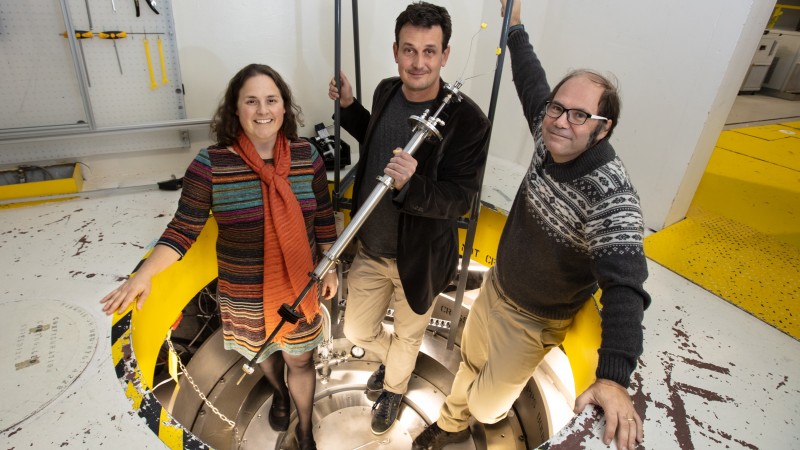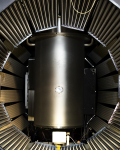Original article courtesy of Brookhaven National Laboratory
UPTON, NY—Scientists at the U.S. Department of Energy’s Brookhaven National Laboratory have new experimental evidence and a predictive theory that solves a long-standing materials science mystery: why certain crystalline materials shrink when heated. Their work, just published in Science Advances, could have widespread application for matching material properties to specific applications in medicine, electronics, and other fields, and may even provide fresh insight into unconventional superconductors (materials that carry electric current with no energy loss).
The evidence comes from precision measurements of the distances between atoms in crystals of scandium fluoride (ScF3), a material known for its unusual contraction under elevated temperatures (also known as “negative thermal expansion”). What the scientists discovered is a new type of vibrational motion that causes the sides of these cube-shaped, seemingly solid crystals to buckle when heated, thus pulling the corners closer together.
“Normally as something heats up, it expands,” said Brookhaven physicist Igor Zaliznyak, who led the project. “When you heat something up, atomic vibrations increase in magnitude, and the overall material size increases to accommodate the larger vibrations.”
That relationship, however, doesn’t hold for certain flexible materials, including chainlike polymers such as plastics and rubber. In those materials, increasing heat increases vibrations only perpendicular to the length of the chains (picture the sideways vibrations of a plucked guitar string). Those transverse vibrations pull the ends of the chains closer together, resulting in overall shrinkage.
But what about scandium fluoride? With a solid, cubic crystalline structure, it looks nothing like a polymer—at least at first glance. In addition, a widespread assumption that the atoms in a solid crystal have to maintain their relative orientations, no matter what the crystal size, left physicists confounded to explain how this material shrinks when heated.
Neutrons and a dedicated student to the rescue
A group from the California Institute of Technology (Caltech) was using one method to explore this mystery at the Spallation Neutron Source (SNS), a DOE Office of Science user facility at Oak Ridge National Laboratory. Measuring how beams of neutrons, a type of subatomic particle, scatter off the atoms in a crystal can give valuable information about their atomic-scale arrangement. It’s particularly useful for lightweight materials like fluorine that are invisible to x-rays, Zaliznyak said.







